10 Jun2019
By Jeffrey Johnston
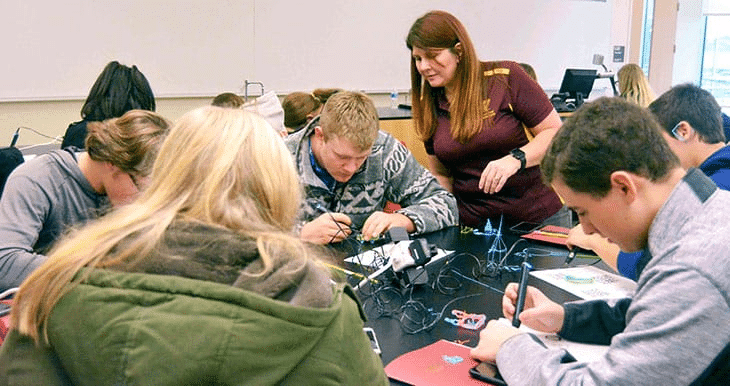
This article and photo originally appeared on the Central Michigan University website and are reprinted with permission.
What can you add to 688 to total 958?
In Central Michigan University’s teacher education programs, the answer is one year: From fall 2017 to fall 2018, admittance and enrollment in teacher ed grew from 688 students to 958, a 39% increase.
To Betty Kirby, acting dean of CMU’s College of Education and Human Services, the explanation is simple.
“CMU is the place to come for excellent teacher preparation,” she said, “and now is a great time to become a teacher.”
30 May2019
By New Mexico Highlands University
This article originally appeared on the New Mexico Highlands University website and is reprinted with permission.
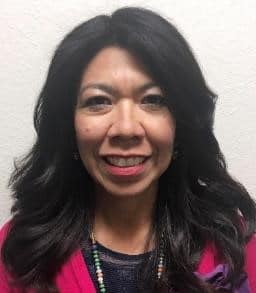 Elisabeth Valenzuela is the first coordinator for the Regional School Partnership, a collaboration among Pojoaque Valley Public Schools, Los Alamos National Laboratory and New Mexico Highlands University that aims to support improved teaching and learning.
Elisabeth Valenzuela is the first coordinator for the Regional School Partnership, a collaboration among Pojoaque Valley Public Schools, Los Alamos National Laboratory and New Mexico Highlands University that aims to support improved teaching and learning.
The innovative partnership, launched in October 2018, is the first of its kind in New Mexico to combine a school district, a major employer and a university teacher education program. It focuses on increasing success for youth in grades 4 through 8.
“The clinical residency program is the most exciting element of this new partnership,” Valenzuela said. “Pre-service teachers who are students in the Highlands School of Education will spend their junior and senior years working three days a week co-teaching a classroom in Pojoaque schools. These college students will work under the mentorship of a highly qualified teacher.”
Valenzuela said Los Alamos National Laboratory has a history of working with Northern New Mexico school districts to improve teaching and learning.
30 May2019
By Brandon R.T. Frost
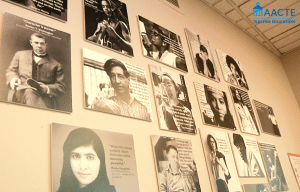
Portland State University’s Graduate School of Education offers a unique, two-year, full-time master’s degree in secondary dual education. In 2014, the Department of Curriculum and Instruction and the Department of Special Education joined together to meet the need of the surrounding communities to increase the number of teachers who are skilled in effective practices for a variety of students. Graduates of the program are equipped to implement inclusive and equitable practices.
“The secondary dual education program in the Graduate School of Education really represents, I think, innovation, collaboration, and equity and inclusion at its highest levels,” says Marvin Lynn, dean of the Graduate School of Education at Portland State University. This particular program was born out of need to ensure all teachers are meeting the needs of all students in the classroom. The emphasis on diversity and equity is part of the Graduate School of Education’s strategic mission as an access university.
30 May2019
By Scott Gibbons
The views expressed in this post do not necessarily reflect the views of AACTE.
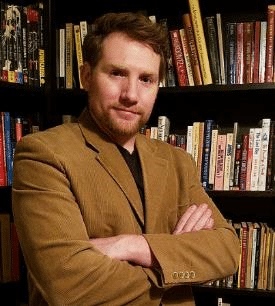 Can there be something within a teacher’s professional identity that enables them to better engage their students? If so, what are some ways an educator can shape their professional identity to more effectively engage their students in content and skill development?
Can there be something within a teacher’s professional identity that enables them to better engage their students? If so, what are some ways an educator can shape their professional identity to more effectively engage their students in content and skill development?
Education researchers (Salli & Osam, 2018) suggest that a teacher’s professional identity is a balance between both teaching strategies and the teacher’s interactions with students. A person’s identity is made up of several unique perspectives (I-positions), working both separately and in harmony with one another to effect one’s decisions and actions in a given situation (Meijers & Hermans, 2018). I-positions are made up of a person’s past experiences, and each I-position then assumes a role within the person’s identity. When a person encounters a new situation, several I-positions may be activated at the same time and through dialogic interaction, either collaborate or form tension with each other in order for the person to make a decision and act within that situation.
The collaboration and tension among I-positions is where a person’s identity is formed or grows.
24 May2019
By Brandon R.T. Frost
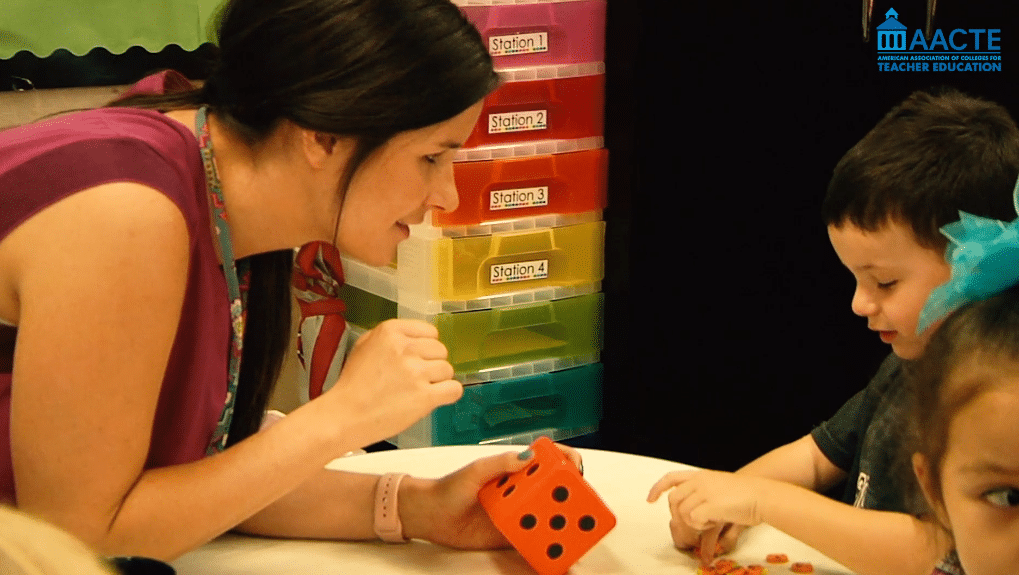
Bowling Green State University’s innovated Inclusive Early Childhood Education program seeks to address the need for teacher candidates to be well prepared to enter the classroom. BGSU recognized the importance of shifting their program to assist their teacher candidates in garnering the necessary teaching practices for a changing classroom environment. “We certainly have a wide array of learners with very diverse needs and one the things that this program helps us do is to ensure that we are graduating teachers that are ready to meet the needs of all those learners,” says Dawn Shinew, dean of the College of Education and Human Development at Bowling Green State University.
Every year, BGSU places over 900 teachers through 88 different partnerships with school districts throughout Ohio, which include both urban and rural districts and social service agencies. Teachers are expected to continue taking coursework during their clinical placements to ensure there is a connection among their coursework and their teacher training in the field. More importantly, BGSU believes teacher candidates should be exposed to the fieldwork earlier than what more traditional programs prescribe. Whereas other, more traditional programs place teacher candidates as student-teachers in their senior year of undergraduate studies, BGSU starts placing juniors in clinical settings with the hope to increase their exposure to their career and receive additional training in a variety of education settings, including special education and inclusive classrooms.
23 May2019
By Georgia Southern University
This article originally appeared on the Georgia Southern University website and is reprinted with permission.
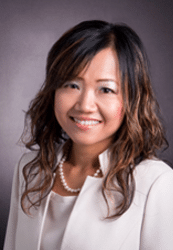 Georgia Southern University and Haven Elementary School are partnering to offer teachers a Gratifying Problem-Solving (GPS) program, which will provide educators unique monthly professional development based on the school’s current need for improved mathematics instruction.
Georgia Southern University and Haven Elementary School are partnering to offer teachers a Gratifying Problem-Solving (GPS) program, which will provide educators unique monthly professional development based on the school’s current need for improved mathematics instruction.
The College of Education’s Jackie Kim, associate professor of elementary and special education, serves as director for the project, totaling $74,976, which is funded by a Community Partnership Grant from the Governor’s Office of Student Achievement.
The GPS program uses a bottom-up approach, allowing the participants at Haven Elementary to help shape its development, workshop activities and directive.
“We go to find out what their inquiries and needs are and create a workshop based on the assessment,” said Kim. “We want to start with what they are currently doing in the classroom and change their practice to make instruction stronger yet doable.”
23 May2019
By Jamie Hipp

The views expressed in this post do not necessarily reflect the views of AACTE.
Teacher educators love to talk. We lecture, provide oral directions, read passages aloud, ask countless questions, and verbally redirect. In addition to the auditory quality of teaching, we have also mastered the visual. Anchor charts, word walls, and mnemonic device posters are endemic in teacher preparation classrooms today as we dutifully prepare the next generation of teachers. Graphic organizers, mind maps, color-coding, and visual aids are also ubiquitous. In the never-ending struggle to meet the needs of all learners, the partiality toward auditory and visual aspects of teaching is biased against students (both adult learner and their future PK-12 students) who do not prefer to learn within those modalities.
21 May2019
By Hanna Melnick
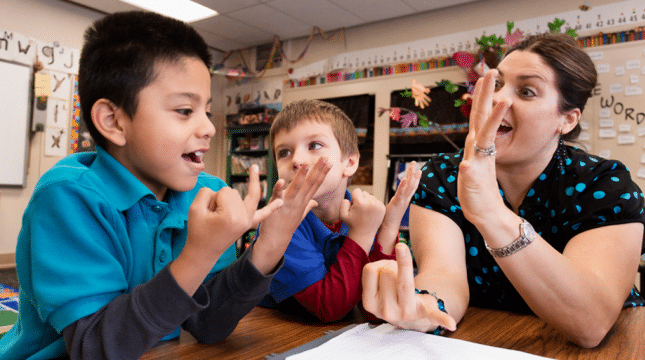
Social and emotional skills, habits, and mindsets—such as being able to manage emotions, establish and maintain positive relationships, and make responsible decisions—can set students up for academic and life success. Decades of research show that incorporating social and emotional learning (SEL) into instruction can lead to positive outcomes, from increased test scores and graduation rates to positive behaviors that support student success in school and beyond.
What can teacher preparation programs do to prepare teachers to integrate SEL into everyday classroom learning? A new case study from the Learning Policy Institute (LPI), Preparing Teachers to Support Social and Emotional Learning: A Case Study of San Jose State University and Lakewood Elementary, provides rich examples of how a publicly funded university in California integrates social and emotional dimensions of teaching and learning into its program, from courses on foundational theory and academic curriculum to fieldwork.
15 May2019
By JTE Insider

Read the latest JTE Insider blog interview by the Journal of Teacher Education (JTE) editorial team. This blog is available to the public, and AACTE members have free access to the articles in the JTE online archives—just log in with your AACTE profile.
This interview features insights from the article “Measuring Teaching Quality of Secondary Mathematics and Science Residents: A Classroom Observation Framework” by Imelda Nava, Jaime Park, Danny Dockterman, Jarod Kawasaki, Jon Schweig, Karen Hunter Quartz, and José Felipe Martínez. The article was published in the March/April 2019 issue of the Journal of Teacher Education.
08 May2019
By Erica D. McCray

The CEEDAR Center will present Culturally responsive education: A course enhancement module (CEM) designed to ensure every educator meets the needs of each learner on Tuesday, May 21, 1:00 p.m. (ET). Registration is now open.
The CEEDAR Center, an OSEP-funded technical assistance center is proud to collaborate with national organizations, technical assistance centers, and stakeholders across the country to ensure that every student with a disability has an equitable opportunity to achieve. Teacher and leader development through policy, preparation, and program improvement is central to our mission. Our partnership with AACTE provides an opportunity to support AACTE’s strategic focus on Diversity, Equity, and Inclusion.
06 May2019
By JTE Insider

Read the latest JTE Insider blog interview by the Journal of Teacher Education (JTE) editorial team. This blog is available to the public, and AACTE members have free access to the articles in the JTE online archives—just log in with your AACTE profile.
This interview features insights from Melanie M. Acosta, author of the JTE article “The Paradox of Pedagogical Excellence Among Exemplary Black Women Educators.” The article is published in the Jan/Feb 2019 issue of the Journal of Teacher Education.
Q1. What motivated you to pursue this particular research topic?
I was compelled to study the professional experiences of exceptional Black women educators for many reasons. One of the most important reasons was related to my own positionality as a Black woman educator with a record of success in teaching. Another crucial reason I wanted to pursue research on Black women educator professional experiences was related to expanding and complicating the dialogue on diversifying the teaching force to focus on issues affecting Black teacher retention, which includes teachers’ positionalities and the treatment of Black women educators in schools.
06 May2019
By AACTE
The American Association of Colleges for Teacher Education (AACTE) is pleased by the U.S. House of Representatives Committee on Appropriations Subcommittee on Labor, Health and Human Services, Education and Related Agencies’ (Labor-H Subcommittee) draft bill released for Fiscal Year 2020 (FY20) yesterday. Among the programs seeing an increase in funding is the Teacher Quality Partnership (TQP) grant program, the only federal initiative dedicated to strengthening and transforming educator preparation at institutions of higher education.
AACTE members have worked tirelessly to inform Congress about the effectiveness of this program, and the result is now tangible. The AACTE community can take heart, as their voices have clearly been heard on Capitol Hill. The bill in its current form increases TQP by $10 million for a total of $53 million; TQP has been flat-funded at $43.1 million since FY15.
29 Apr2019
By Jerrica Thurman
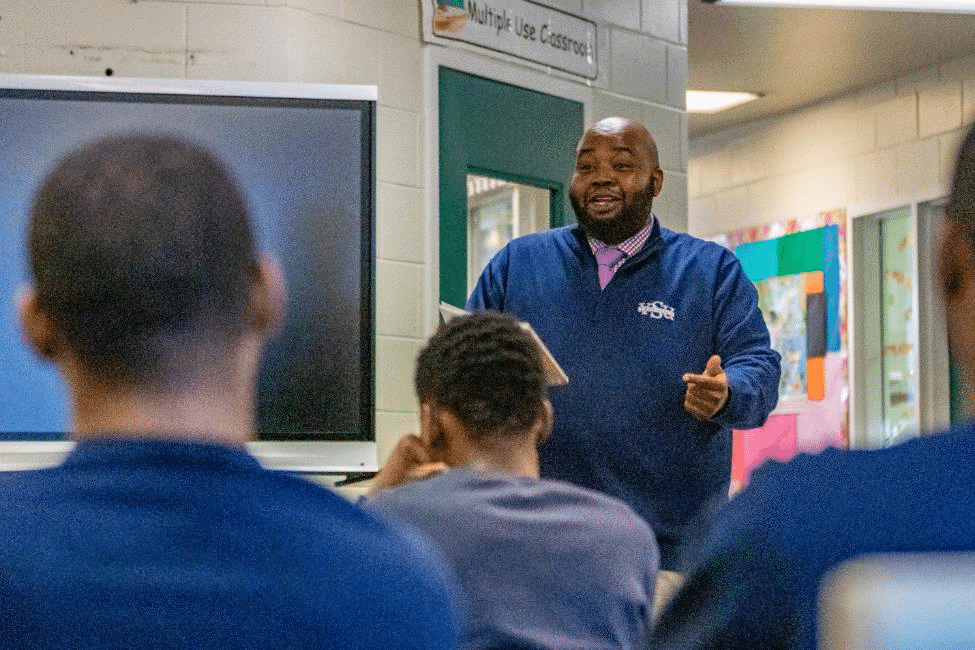
AACTE congratulates 2019 National Teacher of the Year Rodney Robinson and AACTE member institutions Virginia State University and Virginia Commonwealth University, which helped prepare him for his distinguished career path. Robinson is a 19-year teaching veteran who received the national honor last week by the Council of Chief State School Officers. (See AACTE’s press release issued today.)
Robinson teaches social studies at Virgie Binford Education Center, a school inside the Richmond Juvenile Justice Center, where he creates a positive school culture by empowering his students. He earned a bachelor of arts in history from Virginia State University and a master’s in educational administration and supervision from Virginia Commonwealth University.
19 Apr2019
By JTE Insider

Read the latest JTE Insider blog interview by the Journal of Teacher Education (JTE) editorial team. This blog is available to the public, and AACTE members have free access to the articles in the JTE online archives—just log in with your AACTE profile.
This interview features insights from the authors of the JTE article “Keeping Our Best? A Survival Analysis Examining a Measure of Preservice Teacher Quality and Teacher Attrition.” Robert Vagi, Margarita Pivovarova, and Wendy Miedel Barnard co-authored the article, which is published in the March/April 2019 issue of the Journal of Teacher Education.
Q1. What motivated you to pursue this particular research topic?
With a background as a classroom teacher, I’ve seen firsthand the impact that great teachers can have on students. In my experience (and research supports this), those teachers are most desperately needed in challenging schools. As a result, I’ve always been interested in the strategic recruitment and retention of high-quality teachers. This interest fit naturally with my Ph.D. program that was housed in one of the largest teacher education colleges in the country. My co-authors, on the other hand, have been engaged in research on teacher quality and evaluation for several years, both for pre-service and in-service teachers.
17 Apr2019
By Joanne Arhar

The Longview Foundation invites teacher educators to apply for the 2019-2020 cohort of the Global Teacher Education Fellows (GTE) Program. The GTE Fellows Program offers virtual professional development for select U. S. teacher educators to design Global Learning Classrooms for their teacher candidates. Program participants will receive professional development that includes a series of webinars led by experts in global learning and the support of a mentor with expertise in global learning in teacher education.
The GTE Fellows Program is seeking applicants who are
- Committed to global learning
Engaged with a full time teaching load during the 2019-2020 academic year, which includes at least two teacher education courses in an initial teacher preparation program
Supported by their respective dean/department chair to revise and teach at least one teacher education course that incorporates global learning outcomes, assessments, content, technology, and pedagogical practices that foster global competence in K-12 learners.
Interested candidates should apply for the Global Teacher Education Fellows Program by May 1.








 Elisabeth Valenzuela is the first coordinator for the Regional School Partnership, a collaboration among Pojoaque Valley Public Schools, Los Alamos National Laboratory and New Mexico Highlands University that aims to support improved teaching and learning.
Elisabeth Valenzuela is the first coordinator for the Regional School Partnership, a collaboration among Pojoaque Valley Public Schools, Los Alamos National Laboratory and New Mexico Highlands University that aims to support improved teaching and learning.
 Can there be something within a teacher’s professional identity that enables them to better engage their students? If so, what are some ways an educator can shape their professional identity to more effectively engage their students in content and skill development?
Can there be something within a teacher’s professional identity that enables them to better engage their students? If so, what are some ways an educator can shape their professional identity to more effectively engage their students in content and skill development?
 Georgia Southern University and Haven Elementary School are partnering to offer teachers a Gratifying Problem-Solving (GPS) program, which will provide educators unique monthly professional development based on the school’s current need for improved mathematics instruction.
Georgia Southern University and Haven Elementary School are partnering to offer teachers a Gratifying Problem-Solving (GPS) program, which will provide educators unique monthly professional development based on the school’s current need for improved mathematics instruction.




